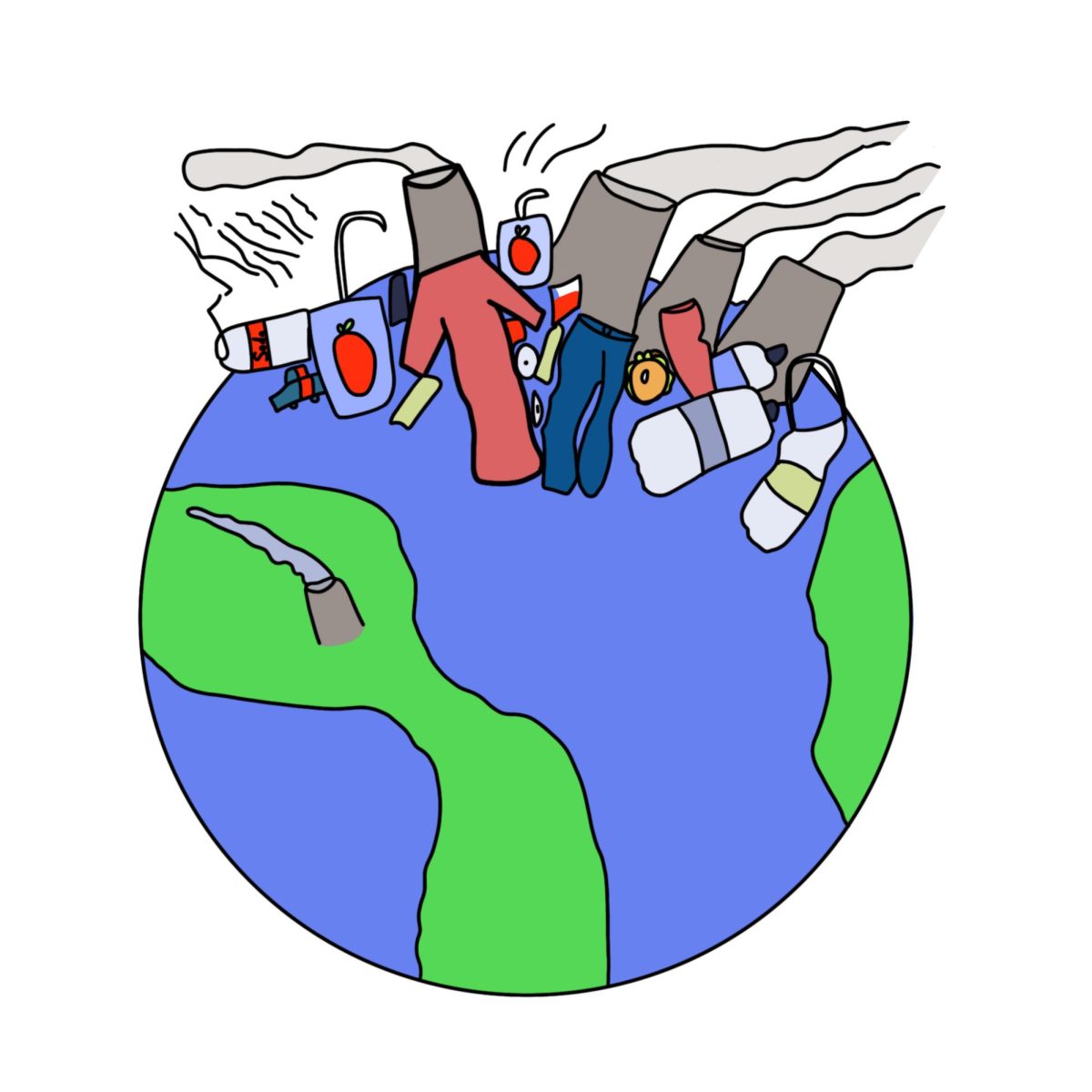Every plastic item bought from the store, every new device made to be put on shelves, and every doorstep delivery comes at a price, but not just financially. As society becomes more advanced, people find new ways to fulfill their needs and wants through purchasing, but behind the simple act of purchasing a new item comes the environmental impact that follows suit – slowly eroding away at our planet.
Much of the western population is defined as consumers. According to a website about global consumerism, “A “consumer” is defined as someone able to buy goods and services beyond the satisfaction of basic needs. If everyone lived like western consumers we would need five planets to support all of the goods. And the number of consumers is growing by the second” (theworldcounts.com). As society continues to purchase more items and consumer rates rise, a greater amount of resources is needed to continue producing, therefore harming the earth.
The typical item used by a consumer goes through a process of manufacturing, usage, and discarding. According to CBS News, “Traditional manufacturing processes often deplete the planet of natural resources, consume immense energy and water, and use chemicals that are harmful to the environment. But the damage doesn’t stop there. After consumers use and discard products, they end up in landfills” (cbsnews.com). There is a finite amount of space on the planet, so space for landfills is extremely limited.
After an item is thrown away, it typically ends up in the landfill, which has harsh impacts on the environment through greenhouse gas emissions. According to The University of Colorado Boulder, “Along with methane, landfills also produce carbon dioxide and water vapor, and trace amounts of oxygen, nitrogen, hydrogen, and non methane organic compounds. These gasses can also contribute to climate change and create smog if left uncontrolled.” Additionally, each landfill tends to take up roughly 600 acres of land. When multiplying that by 3,000 active landfills in the United States, we can see over 1,800,000 acres of natural habitat are lost (colorado.edu). Consumerism is destroying our ecosystem, and constantly discarding products doesn’t help.
The fashion industry is one of many within a consumerism society that heavily impacts the environment. “An estimated 9 billion items of clothing mostly sit unworn in U.S. consumers’ closets every year. We’re buying too much clothing, our closets are too filled. Although many companies are taking steps to reduce their carbon emissions on a per-product basis, experts say that’s not good enough given that their goal is still to keep increasing sales” (cbsnews.com). To make a positive impact on the environment, companies must do more to stop the production of goods that will just be thrown away.
“Our enormously productive economy demands that we make consumption our way of life, that we convert the buying and use of goods into rituals, that we seek our spiritual satisfaction and our ego satisfaction in consumption. We need things consumed, burned up, worn out, replaced and discarded at an ever-increasing rate” (theworldcounts.com). The societal pressure to buy, discard, and replace products not only fuels consumerism, but indirectly leads to environmental hazards in the process. This cycle of finite resource gathering, rapid consumption and disposal of a product has detrimental impacts on the planet, which may lead to irreversible damage.
As consumerism continues to influence our everyday lives, causing more of earth’s finite resources to be used, the global temperature to rise due to greenhouse gasses, and the humongous landfills to continue to pile up, the question arises — how much are we willing to consume before there’s nothing left?

